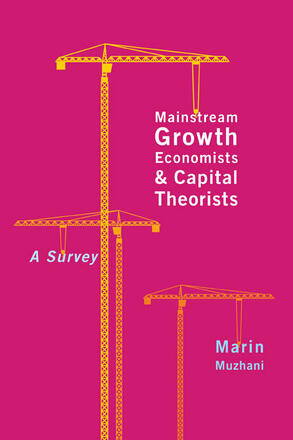
Mainstream Growth Economists and Capital Theorists
A Survey
Description
Mainstream Growth Economists and Capital Theorists provides a historical survey and ideal introduction to modern economics, arguing that due to significant changes in recent years, a re-evaluation is in order. Marin Muzhani presents an informed study of the debates regarding economic growth and development that began in the 1930s in response to the Great Depression. He argues that in the wake of that crisis, the challenge for economists was to understand how to generate stable economic growth in order to prevent future crises. The theories of John Maynard Keynes, in particular, sought to explain the reasons for unemployment and recessions, paving the way for the field of macroeconomics and challenging the basic premises of neoclassical economics. In the late 1930s and 1940s, economists began to extend Keynes' ideas, synthesizing them with neoclassical ideas in order to explain economic growth. This "neoclassical synthesis" would dominate mainstream macroeconomic thought for the next forty years until the mid-1980s with the introduction of endogenous growth theories. Taking into account the historical background, the multitude of interpretations of modern growth models, and the geography of mainstream economists, Mainstream Growth Economists and Capital Theorists will simplify the structure of growth theory for the next generation of economists.
Reviews
"Mainstream Growth Economists and Capital Theorists meets the need for a comprehensive, integrated history of growth and capital theory from Harrod and Domar, through the Cambridge, neoclassical, and endogenous theorists. An ambitious and valuable contribution." Robert W. Dimand, Department of Economics, Brock University
“Muzhani does an admirable job of charting almost a hundred years growth theory in economics. He covers the entire landscape, including 21st-century advancements, in a readable, mathematically precise way. Recommended.” Choice